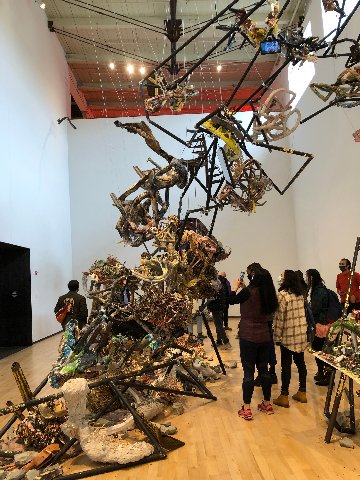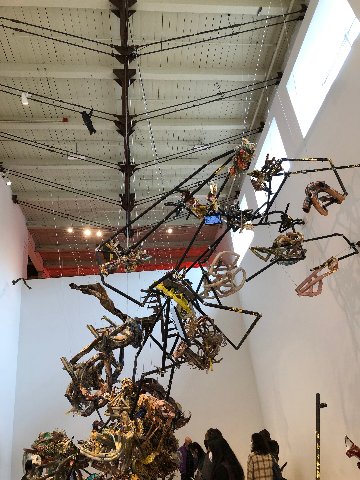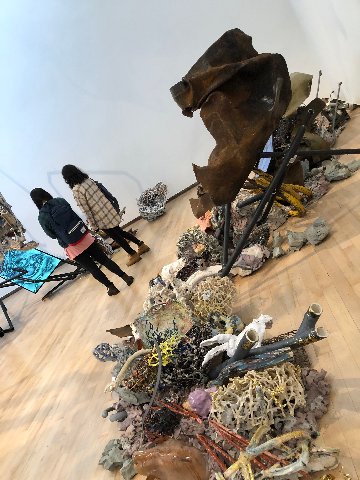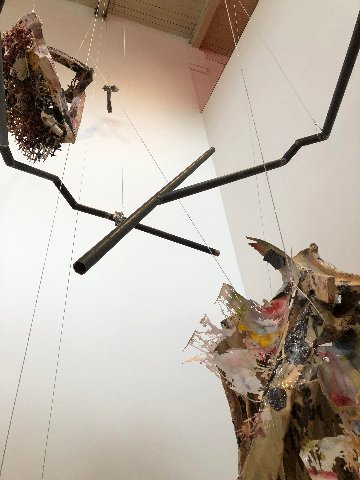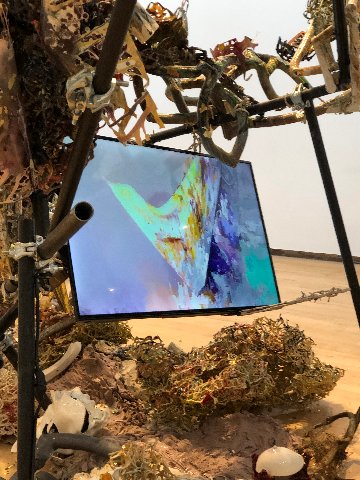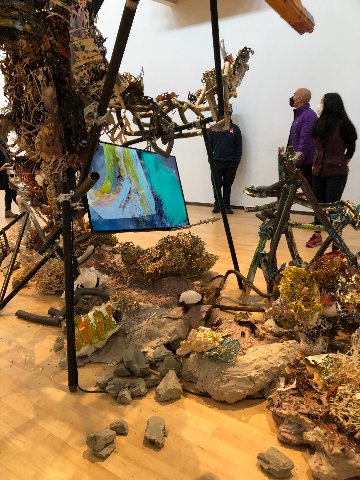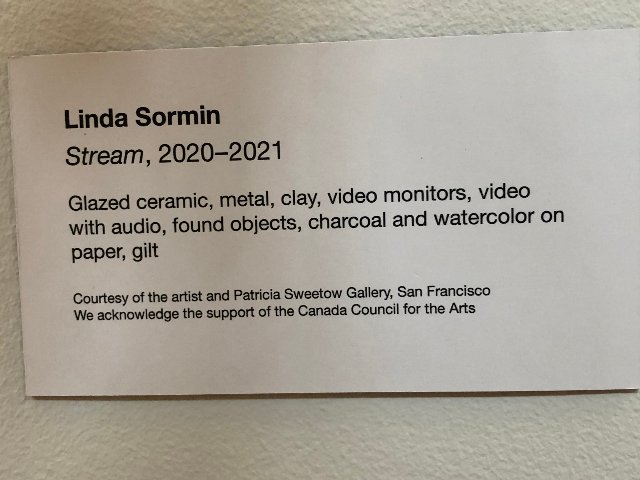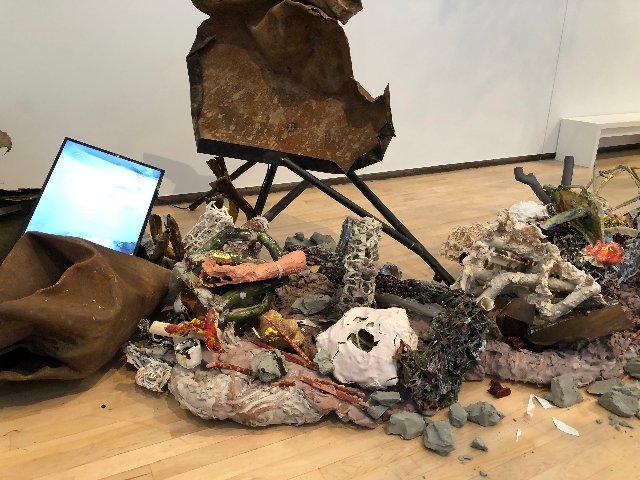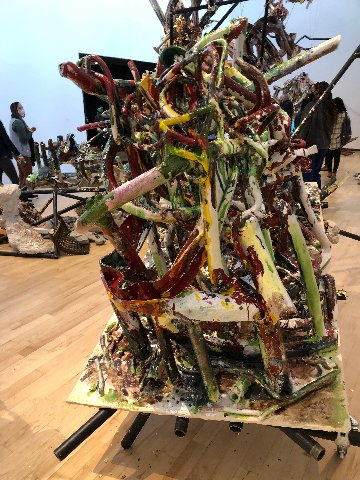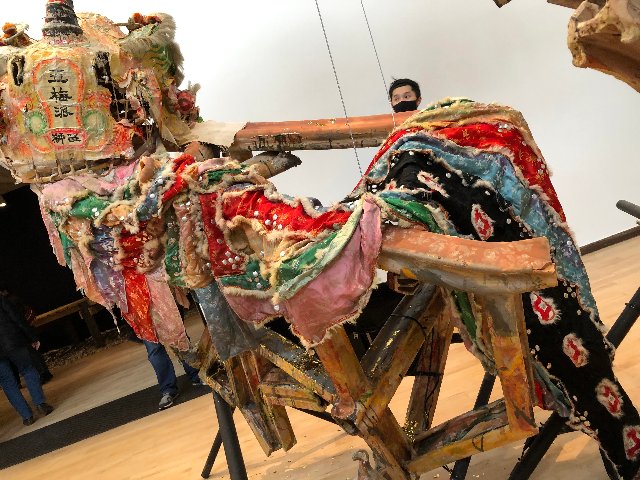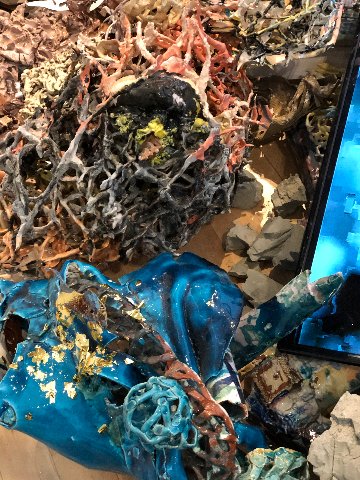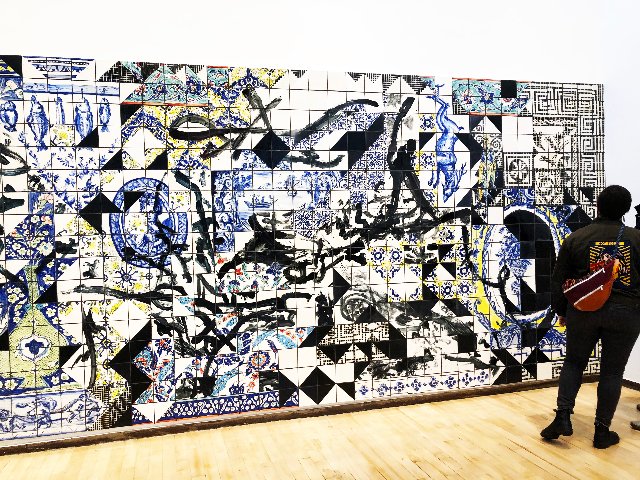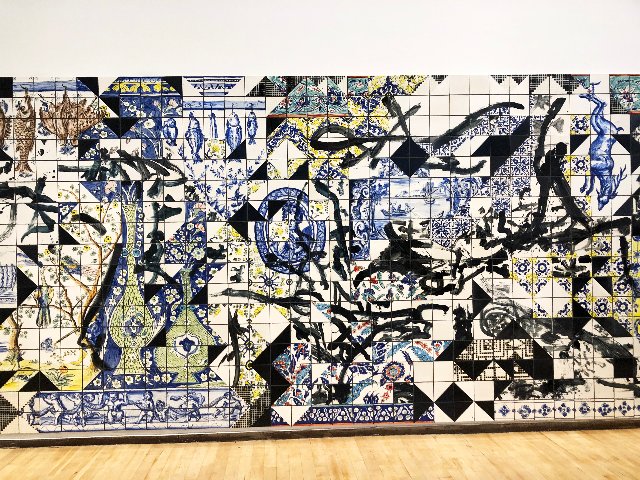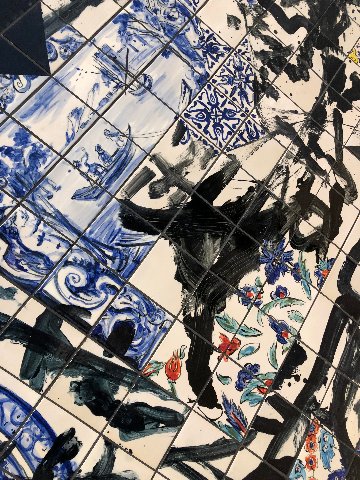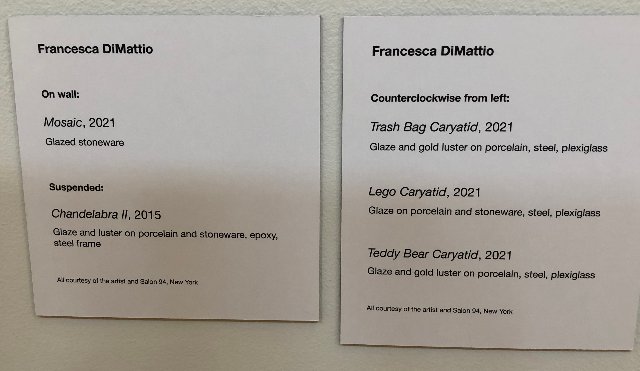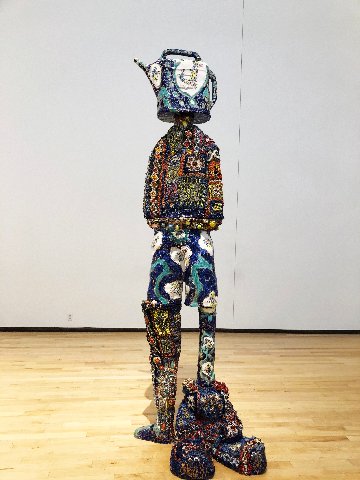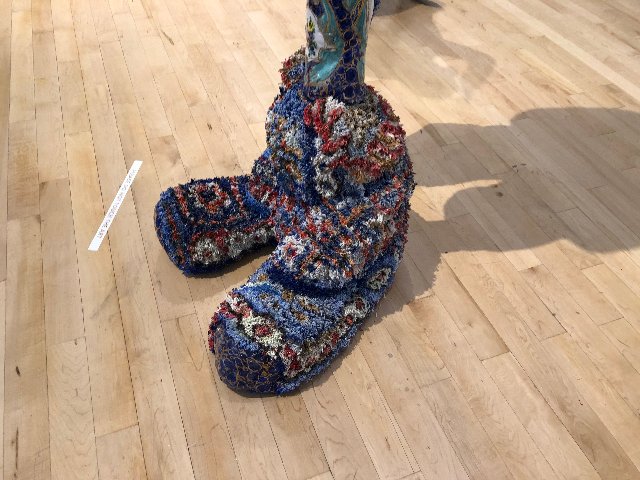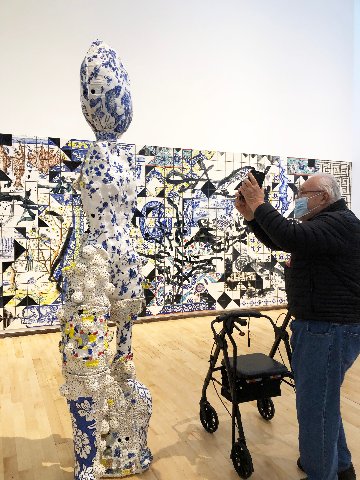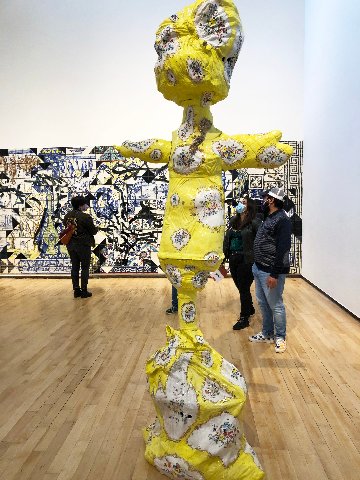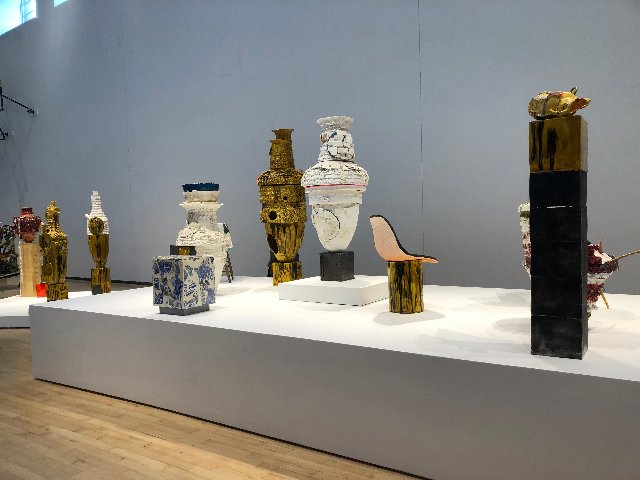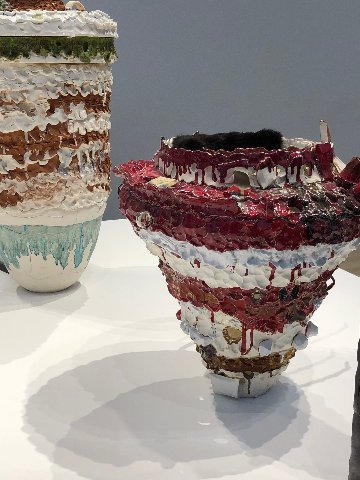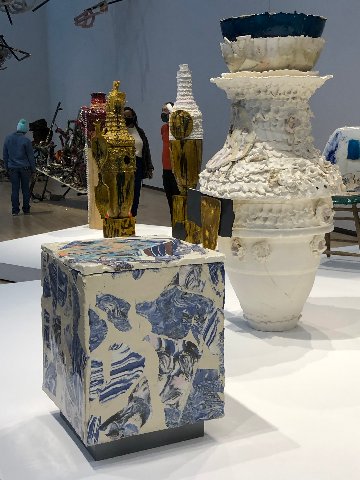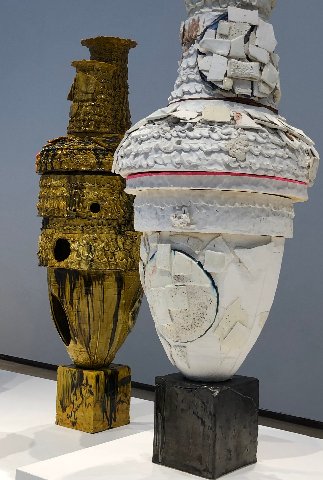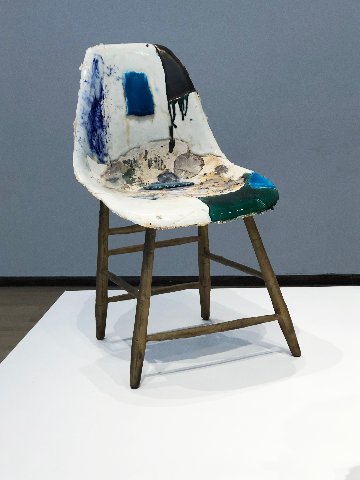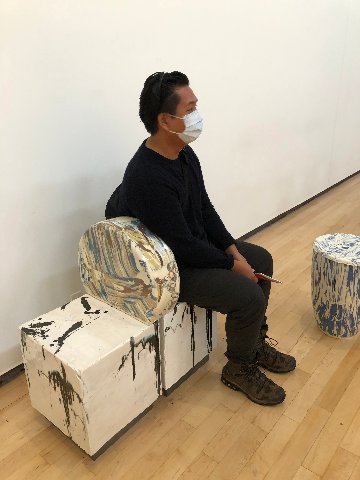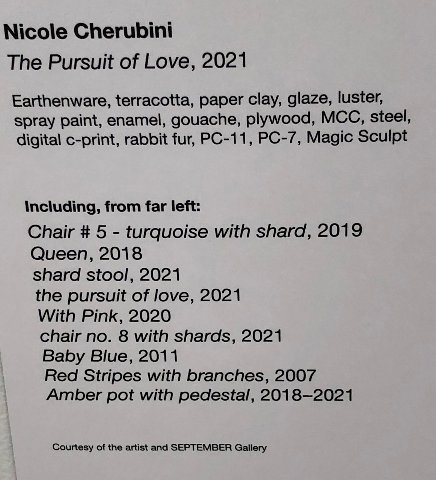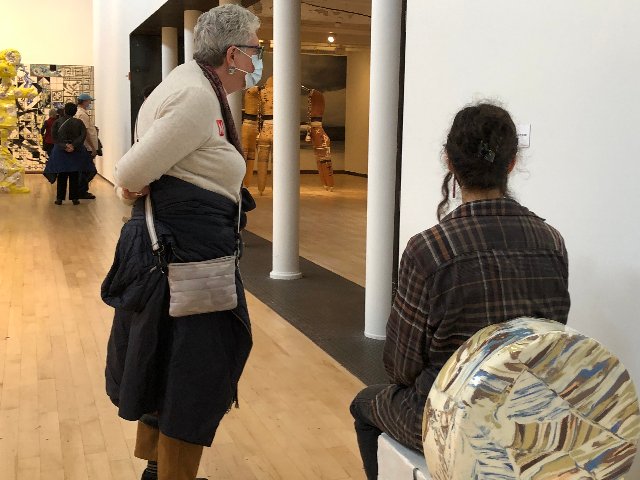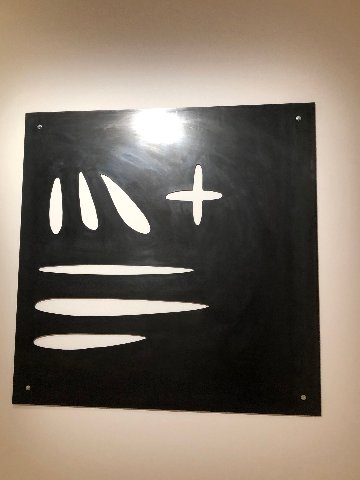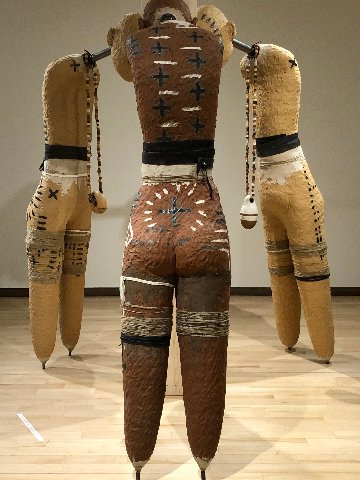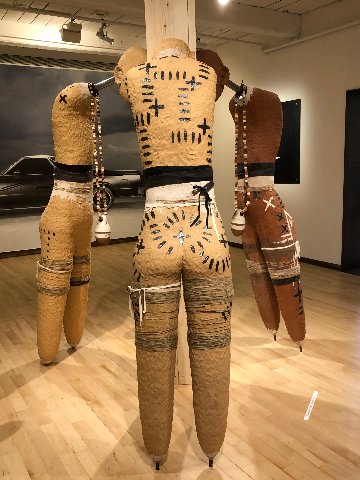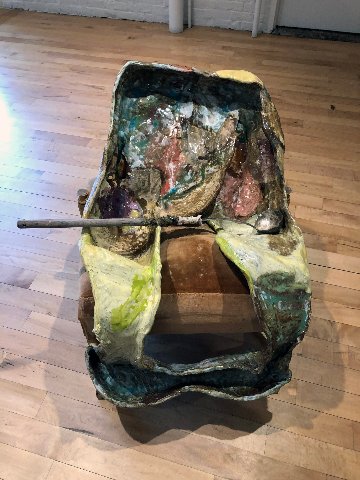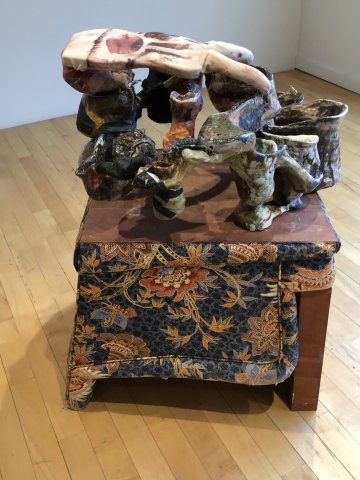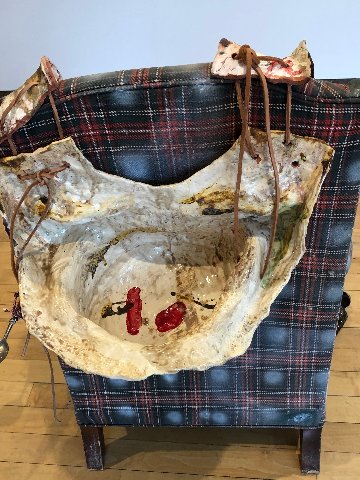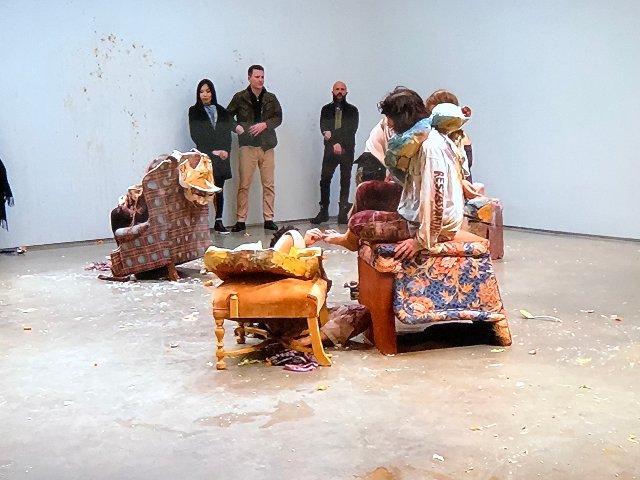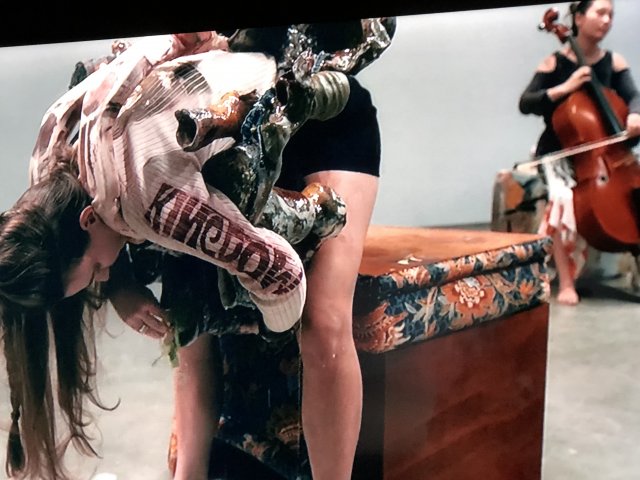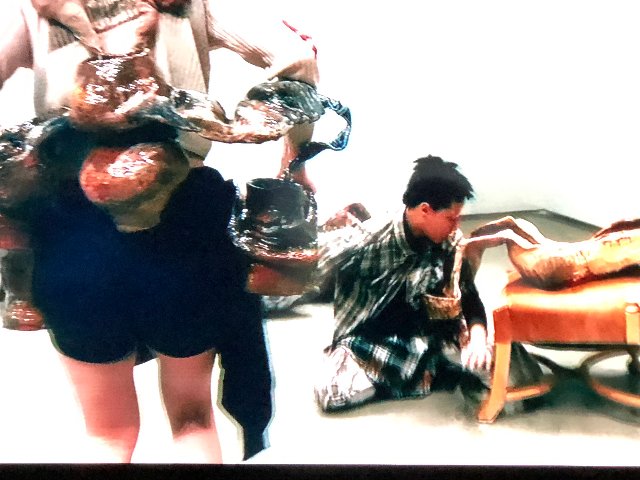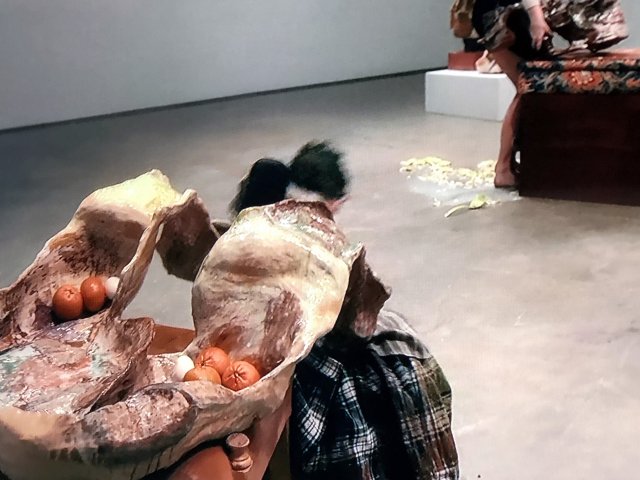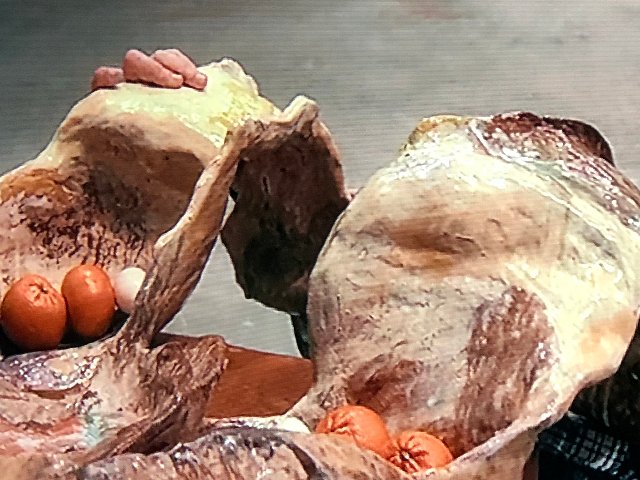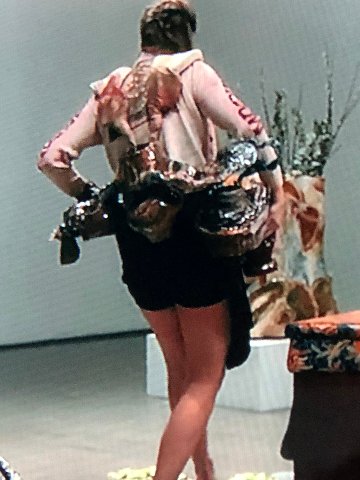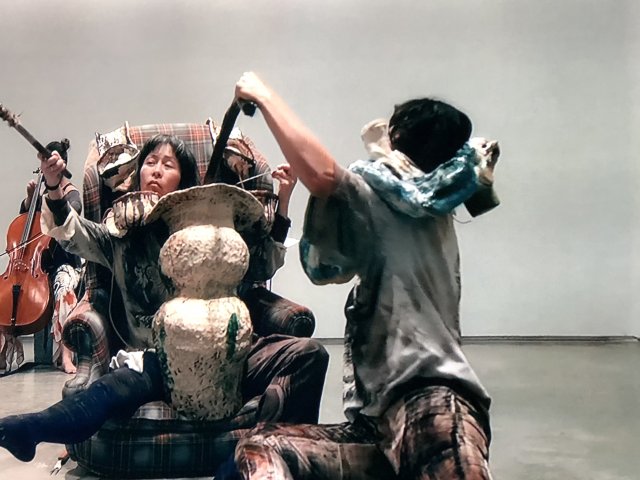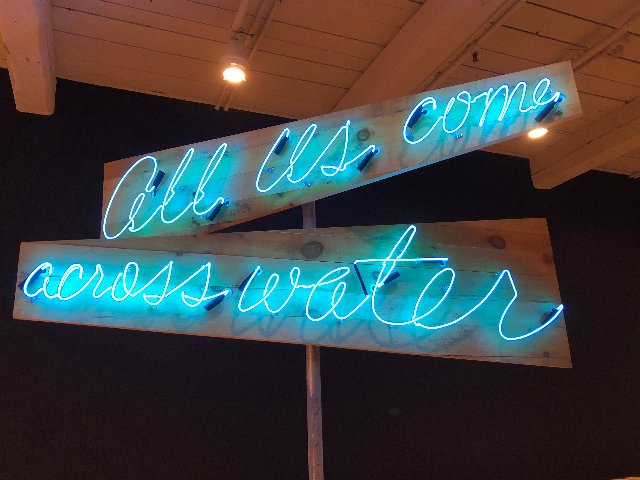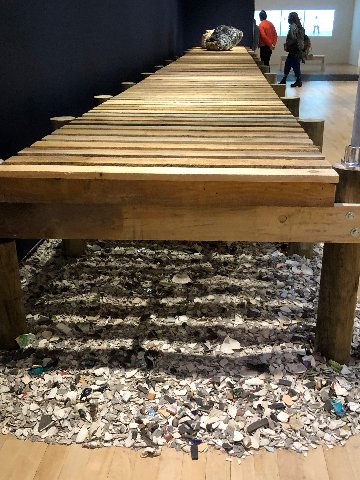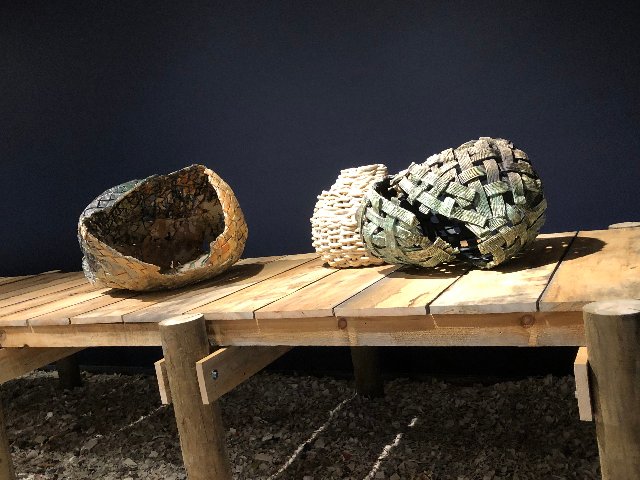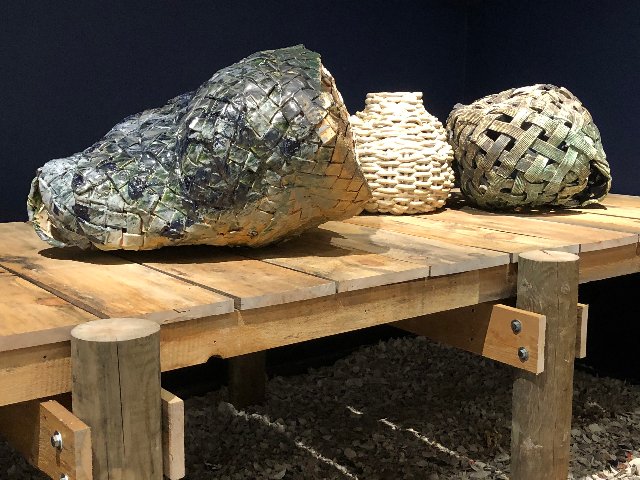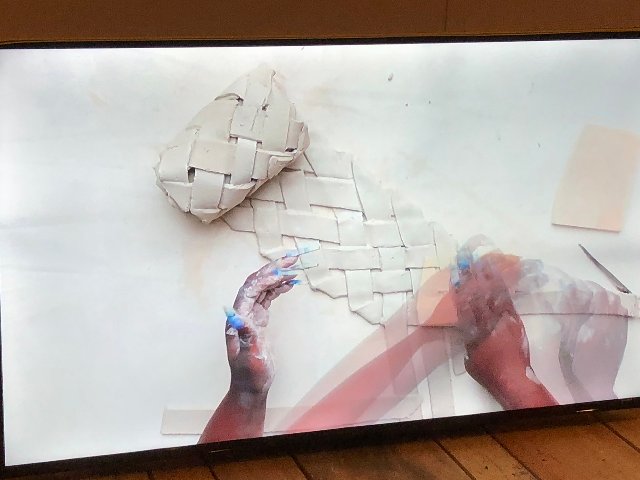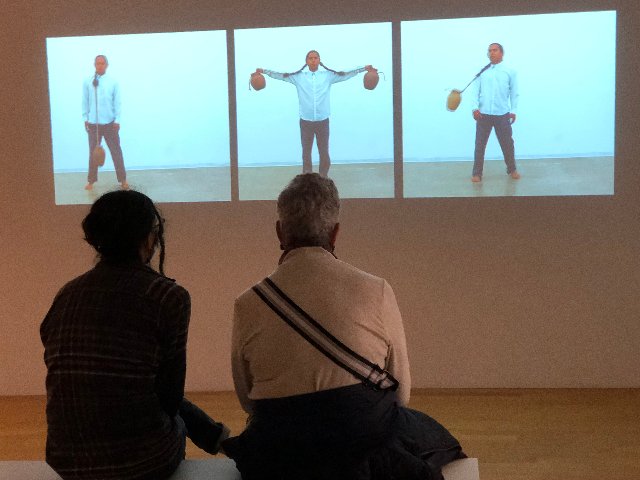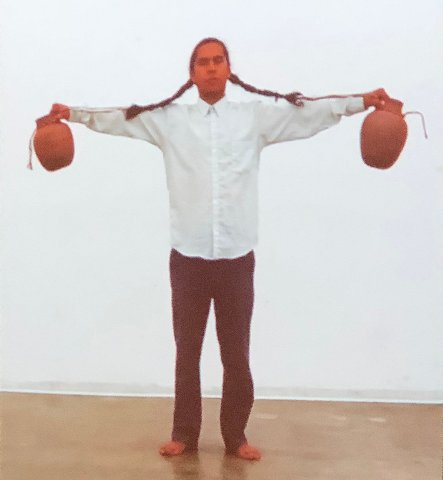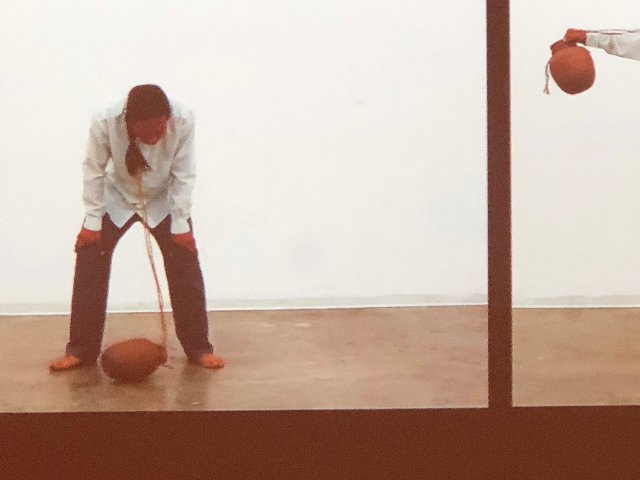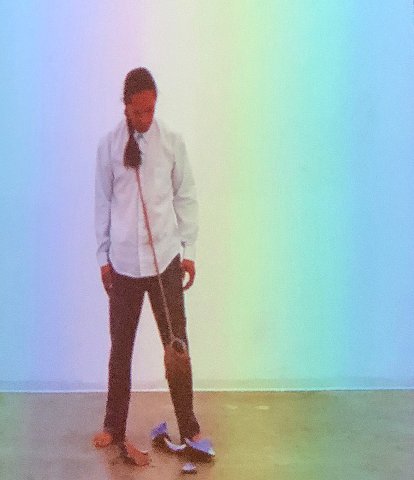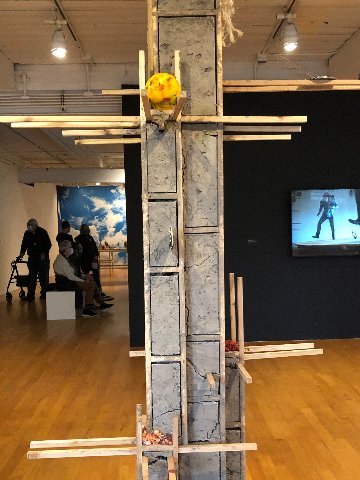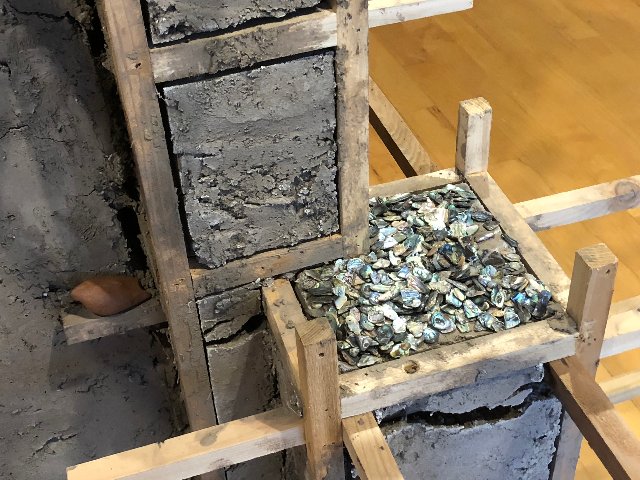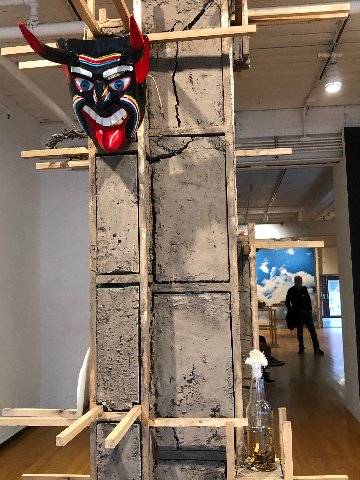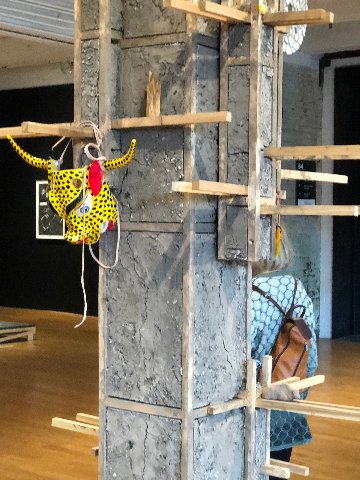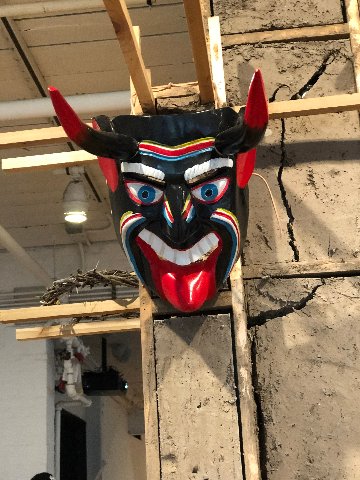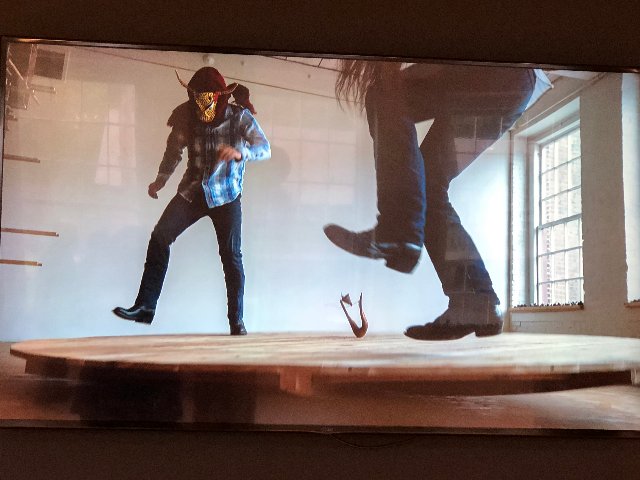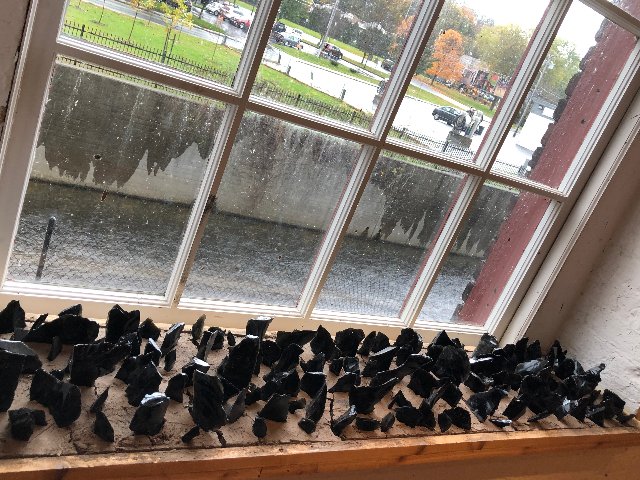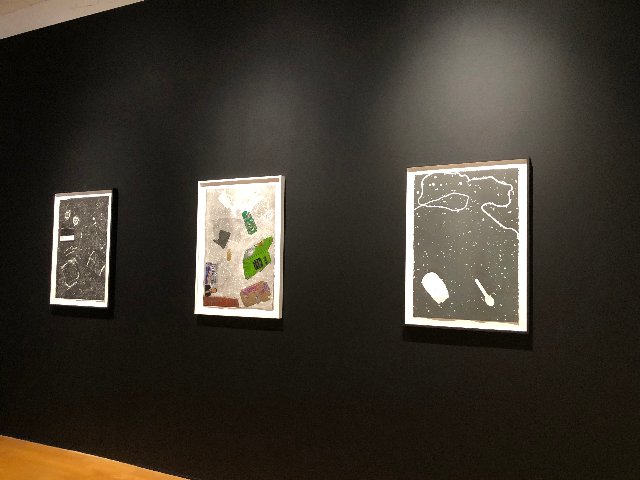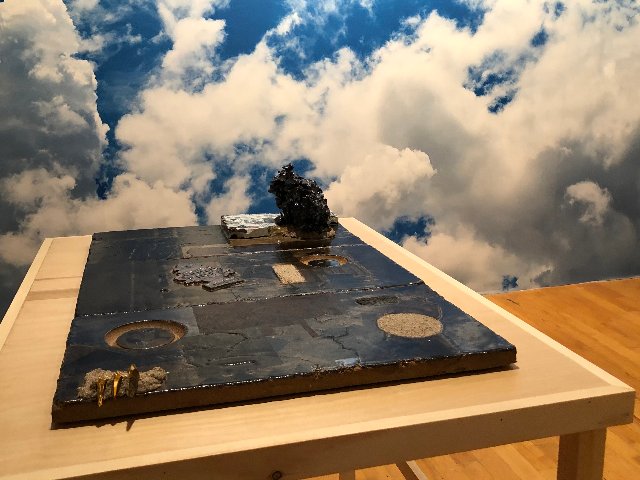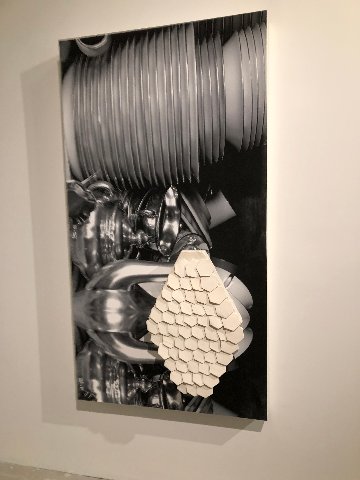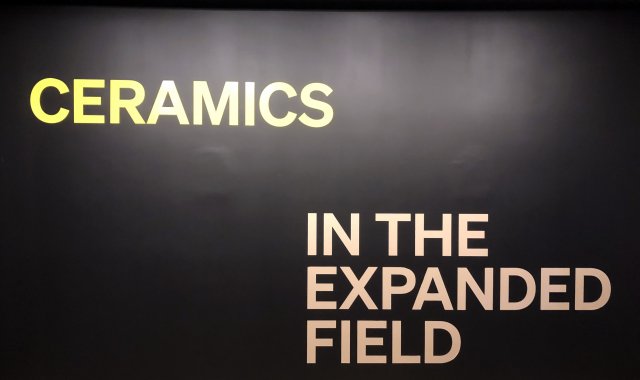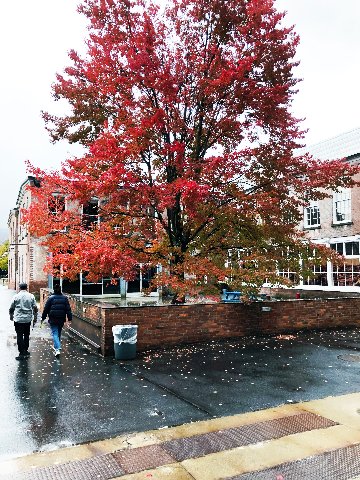Ceramics, MASS MoCA, North Adams, MA
In the Expanded Field
By: Astrid Hiemer - Nov 02, 2021
Ceramics - In The Expanded Field:
Nicole Cherubini ~ Armando Guadalupe Cortes ~ Francesca DiMattio ~ Jessica Jackson Hutchins ~ Kahlil Robert Irving ~ Anina Major ~ Rose B. Simpson ~ Linda Sormin ~~
A Photo Show with Accompanying Short Texts
Ceramic art works and products have increased substantially in size, expression and meaning over the last ten or more years. The sky is the limit here at the current MASS MoCA exhibition and the energy was palpable in the galleries during a rainy Saturday morning visit.
The biggest attraction at times were two tall metal sculptures. They just about fit into the huge first gallery, the height of two MoCA industrial floors. Stanchions are surrounded by colorful ceramic clusters that are covering the floor or are attached at different heights to the metal structures. The title: Stream, 2021, by Linda Sorin is appropriate. It reminds one also of a beach after a storm, when seaweed, shells, trash and stuff have washed up onto a beach. The ceramics have been overheated during production, so that original forms melted into masses of many colors and forms. Here, several monitors are built into the work that are projecting mostly fast-moving abstract images combined with sound. It’s a treasure trove for smart-phone photographers.
At the other end of the gallery, an entire wall is filled with a mosaic (Francesca DiMattio, Mosaic, 2021) of Delft-blue tiles that are also referring from Roman to Spanish and Turkish tile makers. In various spots they are defaced by black color. Formerly known as 'beautiful objects' are not highly rated in this exhibition. References, taste, expressions, understanding and politics have shifted; times have changed!
DiMattio also shows three, perhaps eight-foot tall people or objects with 'club foot,' in yellow, white and delft-blue. They stand in front of the mosaic and a roughly formed tall chandelier by her, Chandelabra II, 2015, is hung way above the visitors’ heads.
Two platforms hold a series of vessels by Nicole Cherubini. They are recognizable as urns or large vases; again, tops or forms may be somewhat irregular by usual standards. An Eames chair’s seat may not be taken. Yet, there is an invitation by her, to sit in another double chair. And a young man did not object to my taking his picture.
Rose B. Simpson is exhibiting three tall androgynous figures with Native American overtones in front of a large size photograph of her black-on-black reproduction of a 1985 El Camino, titled Maria, 2014. She honors the famous Maria Martinez, known for her black stoneware. Both women are Tewa.
Jessica Jackson Hutchins is showing a video of a performance from NYC, 2020, where very slowly several performers move from the floor to seating and standing positions, while holding or carrying around their necks and bodies heavy ersatz baskets and forms made of ceramic. These ‘baskets’ are on exhibition, placed in chairs or turned upside down as a pedestal.
Anina Major invites to an installation, titled: All Us Come Across Water. A long wooden walk-way or dock eventually leads to three dented glazed pots, also a reminder of basket weaving in minority communities. Millions of shards of pottery and shells on the floor point to treacherous waters and horrendous conditions that generations of slaves and immigrants had to endure to arrive in the USA.
Nearby one can see a video of Armando Guadalupe Cortes, where the artist, in three sections, attempts to break clay pots that he’s circling around his head and body. The pots are attached to his braids! The video allows for some reprieve, when he finally breaks the pots. It appears to be a very popular piece.
Yet, around the corner, in another gallery, the artist covered five columns with wooden structures. We happen to see the process, before he filled in many areas with adobe made of earth and organic material (Spanish, adobe = mud brick). Symbolic memorabilia, including masks, precious stones, bottled folk remedies are hung or placed on horizontal spots. There are photographs of a dance performance of two men, the artist and his brother, on a round and imbalanced stage. The dancers are wearing the masks and their ‘stage’ is placed on exhibition. This site-specific installation is titled Castillos, 2021.
Kahlil Robert Irving’s major piece: Wonder Land of many men, ro-man, Black and Black, 2019, form a grid of hand pressed tiles, unglazed, inches from the floor. They sit on a wooden platform, and, of course, may remind the viewer of 20th Century artists. There are the steel tiles by Carl Andre, in similar sizes, placed directly on a gallery floor in grid form. Other artists, like Sol Le Witt, whose nearby long-term exhibition in an entire multi-floor building in this museum continues to draw admirers. Donald Judd, Frank Stella, etc. applied the grid in their work as well.
Irving’s other grid works are elevated on big pedestals. One grid is placed in front of his Big Sky, 2019 photograph. They have every-day objects embedded in them. The blue-sky photograph breaks the dark tension!
Finally, the visitor encounters Cherubini's work again in the rear of the exhibition. Here she is mostly represented by wall elements. Photographs, turned into three dimensional pieces, by adding ceramic parts.
All participating artists refer their works to their specific or our collective histories, with extensive explanations that made the work meaningful and possible. We have seen many and reviewed a few ceramic/clay exhibitions over the years. Ceramics have blown the top off the art form and formerly known practitioners were artisans - now definitely artists.
Go see it!

